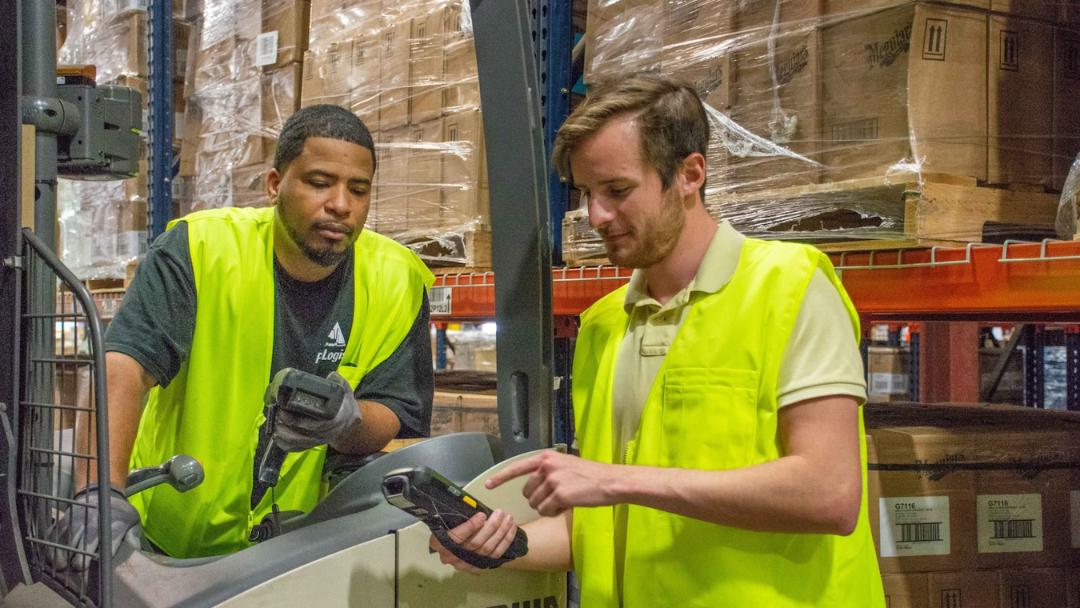In 2021, Forbes published an article describing the poor working conditions in Amazon warehouses leading to increased employee turnover rates. Serving as a cautionary tale, here are some easy ways to improve your own employees' day-to-day experience and minimize turnover.
What is employee turnover?
As described by TalentLyft, employee turnover refers to the number of employees who leave their job within a defined period, whether voluntarily (resignations) or involuntarily (dismissals). In 2021, the Bureau of Labor found that in the transportation, warehousing and utilities sector the turnover rate was a whopping 49%.
Why and when turnover is a bad thing
It's important to remember that a degree of turnover is normal and healthy. However, a problem arises when the turnover rate is higher than the industry standard and the reasons for turnover must be investigated. High turnover rates are generally considered to be negative because:
- Costs associated with turnover are incredibly high because finding, hiring and onboarding/training new employees is a costly HR exercise. The Society for Human Resource Management found that direct replacement costs can add up to half the leaving employee's salary and total replacement costs can add up to twice the leaving employee's salary.
- As explained by the Corporate Finance Institute, high turnover rates decrease the morale and productivity of employees who remain in the organization.
- High turnover rates are bad for an organization's public image.
Why do high turnover rates occur?
As outlined by Bamboo HR, employees leave organizations because they feel:
- There's no room for career development or growth in their organization. This is often due to a lack of upskilling programs and very little or no chance of promotions and salary increases. Junior employees remain in junior positions, never moving into more senior positions.
- Overworked and burnt out due to having to put in too much overtime (often not being compensated for their time) or regular working hours are too long and unsustainable.
- Their work environment isn't conducive to positive and healthy employee-employee or employee-management relations and feel abused at work.
- They have no work-life balance. This is often because management doesn't give consideration to employees' lives outside of work.
The Hidden Cost of Turnover
There's a reason turnover is feared among managers and business owners. It can be costly to lose (and replace) an employee. There are the obvious expenses, such as recruitment and onboarding of the new worker. But there are a number of other things that contribute to the negative side of turnover, including some that are intangible. It's important to keep good talent on your team, but even more important when you consider everything you lose along with them.
Remaining staff
Forbes urges managers to consider the remaining staff. They're picking up the slack of the team member that left, and that can administer a beating to morale. After all, one person doing the job of two people simply isn't fair, or sustainable. There could be tasks not in their original job description, they might need to work longer hours or take on more shifts, and anything else that comes along with the redistribution of responsibility. Employees may ask for raises you don't have the funds for as you search for someone else. They may also muster grumblings of dissatisfaction as they take on the additional work, which can make the overall atmosphere negative. A negative atmosphere will affect everyone on the team, which can lead to even more turnover, and the cycle continues.
Your employees should already be working at full capacity, so make sure that you acknowledge and reward the additional work that your remaining staff takes on, and take the time to make sure they know they are appreciated. You might also consider speeding up the hiring process as much as possible to mitigate this.
Lost knowledge
It takes time for a position to be mastered. It also takes time for an employee to integrate into a company, form relationships, and learn the nuances of a job that can't be taught in your standard operating procedure packets. Lost knowledge can be a major hit when talking turnover, according to LinkedIn. An employee who has been on the job for more than a year will have their own ways of doing things and a level of understanding that takes time to replicate (not to mention, be trained on). They also have their own unique skills and talents like any individual, that may have been suited perfectly to your team. For example, a charismatic personality and creative problem-solving skills, particularly in your field, are intangibles that can't be handed to a new hire. These are things you don't want to lose, if at all possible. When you lose an employee, you lose all the knowledge they carried with them. This is also a good lesson in making sure you have more than one person trained on tasks.
How can you reduce employee turnover rates?
Fortunately, there are many ways in which you can keep your employees happy and reduce turnover rates:
- Hire the right people with the necessary skills who are a good fit for your company's culture.
- Offer upskilling and career development programs.
- Define a clear growth path for employees within your company.
- Conduct regular performance reviews to provide feedback to employees to help improve their performance
- Offer promotions and salary increases where appropriate.
- Set reasonable working hours.
- Implement effective HR protocols for mediation and employee relations disputes. Communication is key!
- Provide employees with a sufficient amount of sick days and PTO to help them maintain a healthy work-life balance. Respect employees' commitments outside of work within reason.
- Offer employees working flexibility, such as a hybrid working model, where applicable.


